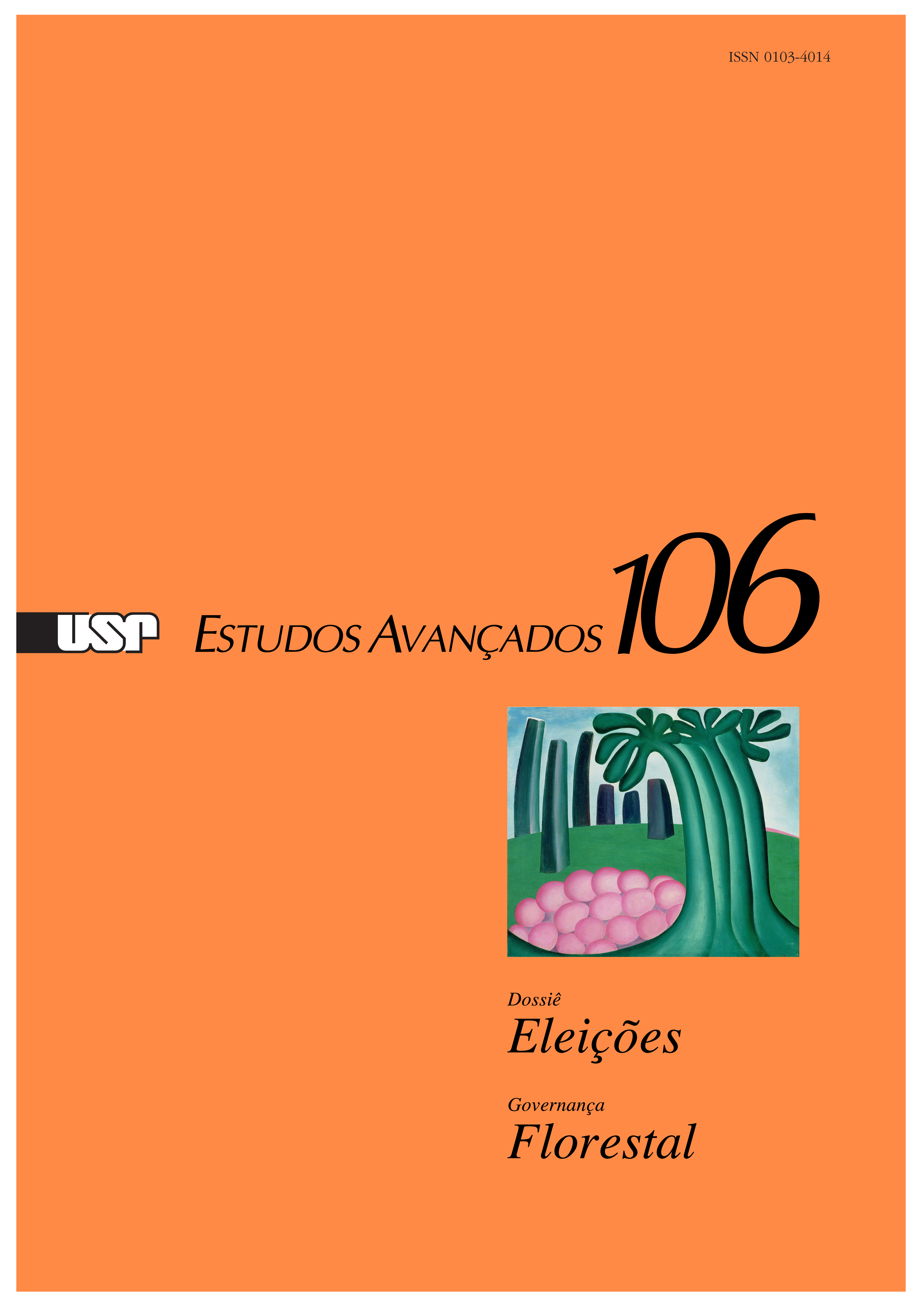Is Brazil really a polarized country? Analysis of presidential elections from 1989 to 2018
DOI:
https://doi.org/10.1590/s0103-4014.2022.36106.002Keywords:
Brazilian presidential elections, Voting polarization, Electoral geography, PT, PSBDAbstract
We analyze the eight Brazilian presidential elections of the post-military dictatorship period, given the central role they played in the organization of our Coalition Presidentialism. We investigate the electoral and geographic polarization in these elections, their characteristics and dynamics, analyzing with spatial statistics the voting in the 5,570 municipalities. We found significant polarization in all of them. However, they vary in direction and intensity. There are two periods delimited by the 2002 election. There are also two trajectories, observed in more detail through statistics and maps of the electoral territories. The PT and PSDB parties have different dynamics throughout the series, but from 2006 onwards they remain geographically polarized with the same degree of intensity and with an upward trend. The PRN (Collor) and PSL (Bolsonaro) parties, at the extremes of the series, are protagonists of two atypical elections, with polarization and territorial alignment similar to those of the PSDB.
Downloads
References
ABRANCHES, S. Presidencialismo de coalizão: o dilema institucional brasileiro. Dados – Revista de Ciências Sociais, Rio de Janeiro, v.31, n.1, p.5-38, 1988.
ABRANCHES, S. Presidencialismo de coalizão: raízes e evolução do modelo político brasileiro. São Paulo: Cia. das Letras, 2018.
AGNEW, J. Mapping politics: how context counts in electoral geography. Political Geography, v.15, n.2, p.129-146, 1996a.
AGNEW, J. Maps and models in political studies: a reply to comments. Political Geography, v.15, n.2, p.165-7, 1996b.
ALKMIM, A. C. O eterno retorno. Eleições municipais para presidente no Brasil. Demografia, sociedade, economia e geografia. Rio de Janeiro: Editora Letra Capital, 2018.
ANSELIN, L. Local Indicators of Spatial Association-LISA. Geographical Analysis, v.27, n. 2, p.93-115, 1995.
ARRETCHE, M.; MARQUES, E.; FARIA, C. A. P. de. Política: desigualdades e inclusão nos governos do PSDB e do PT. São Paulo: Editora Unesp, 2019.
BISHOP, B. The Big Sort: Why the clustering of like-minded America is tearing us apart. Boston: First Mariner Books, 2009.
CASTELLS, M. Ruptura. A crise da democracia liberal. Rio de Janeiro: Zahar, 2019.
COUTO, L.; SOARES, B.; LIVRAMENTO, A. Presidencialismo de coalizão, conceito e aplicação. Revista Brasileira de Ciência Política, n.34. e241841, p.1-39, 2021. doi: 10.1590/0103-3352.2021.34.241841
DALTON, J. R.; WATTENBERG, M. P. Parties without Partisans Political Change in Advanced Industrial Democracies. Oxford University Press, 2000.
DUVERGER, M. Os Partidos Políticos. Rio de Janeiro: Zahar; UnB, 1980.
FOTHERINGHAM, A. S.; LI, Z.; WOLF, L. J. Scale, Context, and Heterogeneity: A Spatial Analytical Perspective on the 2016 U.S. Presidential Election. In: ANNALS OF THE AMERICAN ASSOCIATION OF GEOGRAPHERS, 2021. Disponível em: <https://doi.org/10.1080/24694452.2020.1835459>.
JOHNSTON, R. et al. The Geographical Polarization of the American Electorate: a Country of Increasing Electoral Landslides. GeoJournal, v.85, n.1, p.187-204, 2020. Disponível em: <https://doi.org/10.1007/s10708-018-9955-3>.
KEY, V. O. A Theory of Critical Elections. Journal of Politics, v.17, n.1, p.3-18, 1955.
KIM, J.; ELLIOT, E.; WANG, D. A spatial analysis of county-level outcomes in US Presidential elections: 1988-2000. Electoral Studies, v.22, n.4, p.741-61, 2003.
KING, G. Why context should not count. Political Geography, v.15, n.2, p.159-64, 1996.
LEVITSKY, S.; ZIBLATT, D. Como as democracias morrem. Rio de Janeiro: Zahar, 2018.
LI, Z.; FOTHERINGHAM, A. Stewart. The spatial and temporal dynamics of voter preference determinants in four U.S. presidential elections (2008–2020). Transactions in GIS, v.26, n.3, p.1-20, 2021. Disponível em: <https://doi.org/10.1111/tgis.12880>.
MELLO, P. A máquina do ódio. São Paulo: Cia. das Letras, 2020.
MICHAEL, D. et al. Political polarization in the american public. Pew Center Reseach Center. 2014. Disponível em: <https://www.pewresearch.org/politics/2014/06/12/section-2-growing-partisan-antipathy/>.
NICOLAU, J. O Brasil dobrou à direita. Rio de Janeiro: Zahar, 2020.
PRZEWORSKI, A. Por que eleições importam? Rio de Janeiro: Eduerj, 2021.
RUCIMAN, D. Como a democracia chega ao fim? São Paulo: Todavia, 2018.
SARTORI, G. 1982. Partidos e Sistemas Partidários. Trad. Waltensir Dutra. Rio de Janeiro: Zahar, 1982.
SOARES, G. A. D.; TERRON, S. L. Dois Lulas: a geografia eleitoral da reeleição (explorando conceitos, métodos e técnicas de análise geoespacial). Opinião Pública, v.14, n.2, p.269-301, 2008.
TERRON, S. L. A composição de territórios eleitorais no Brasil: uma análise das votações de Lula (1989-2006). Rio de Janeiro, 2009. Tese (Doutorado em Ciência Política) – Instituto Universitário de Pesquisas do Rio de Janeiro, Universidade Candido Mendes.
WILLIAN. J. B. Emotion shapes the diffusion of moralized content in social networks. PNAS, v.114, n.28, p.7313-18, July 11, 2017. Disponível em: .
Downloads
Published
Issue
Section
License
Copyright (c) 2022 Antonio Carlos Alkmim, Sonia Luiza Terron

This work is licensed under a Creative Commons Attribution-NonCommercial 4.0 International License.
Estudos Avançados não celebra contrato de cessão de direitos autorais com seus colaboradores, razão pela qual não detém os direitos autorais dos artigos publicados. Os interessados em reproduzir artigos publicados na revista devem necessariamente obter o consentimento do autor e atribuir devidamente os créditos ao periódico.


